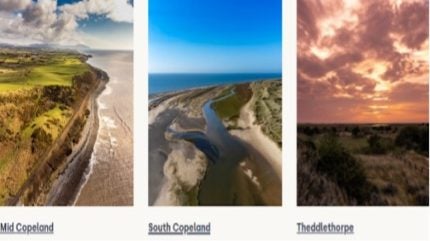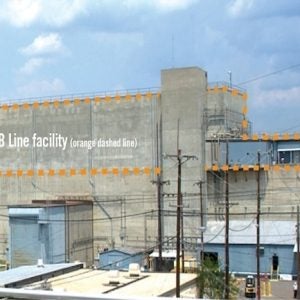
UK Nuclear Waste Services (NWS) has published Areas of Focus in the search to find a suitable site and a willing community to host a Geological Disposal Facility (GDF). The areas are within the three communities currently involved in the process, in Mid Copeland and South Copeland in Cumbria, and in East Lincolnshire.
This will enable NWS to focus more in-depth studies and investigations to help experts understand and consider the potential for an area to safely and securely host a GDF. These areas were identified using a range of information, such as geological data, areas of environmental protection, and consideration of built-up areas.
However, identifying Areas of Focus does not mean a GDF will be sited there. Construction will only start when a suitable site is identified, a potential host community has confirmed its willingness to host the facility, and all the necessary consents and permits have been obtained.
“NWS is delivering a GDF as the safe, secure, and long-term solution for the most hazardous radioactive waste,” said NWS CEO Corhyn Parr. “We are making real progress and establishing these Areas of Focus will help direct our investigations to help us determine the potential suitability of a specific area, with on-the ground surveys, further desk studies and engagement with landowners.”
Parr, who is leaving NWS in March, explained that a GDF requires a suitable site and willing community and will only be developed when both are in place. “We will continue our engagement with local people and stakeholders, and will be holding events in local communities to talk about what this means for each area.”
In screening to find a suitable site for a GDF, three key elements are needed – the right sub-surface geological environment deep underground, a suitable surface location, and the ability to connect the two areas with accessways. Identifying these areas enables NWS to focus site evaluation studies, such as transport and environmental surveys, and the site characterisation work needed to consider the potential for an area to safely host a GDF.
NWS is currently gathering information to understand if the current Search Areas, in Mid Copeland and South Copeland in Cumbria and Theddlethorpe, in Lincolnshire, could be suitable to host a GDF. As I it is difficult to carry out some of the more detailed feasibility studies required in large Search Areas and the adjacent inshore (the area beyond the coast out to a maximum of 22km), NWS identifies smaller Areas of Focus in the Search Area, as a key step in the identification process. This allows focused site evaluation studies and prioritisation of resources to consider the potential for an area to safely host a GDF.
Any decision to take forward more detailed investigations would need to be approved by the Secretary of State. Exact locations for borehole drilling would be determined though consultation and environmental assessment work. Over many years borehole data, together with results from research and development, will be used to build understanding of whether an area could safely host a GDF.
Finding the right site to build the GDF – which could be between 200 to 1000 metres underground or under the seabed – could take 10-15 years The current projected timeline is for a GDF to be ready to receive intermediate-level waste between 2050 and 2060.






